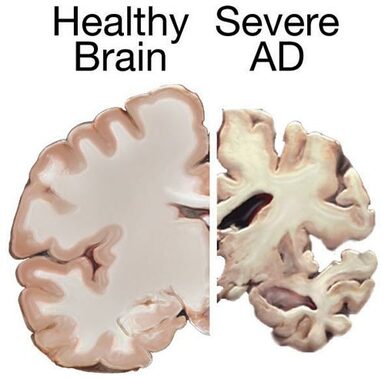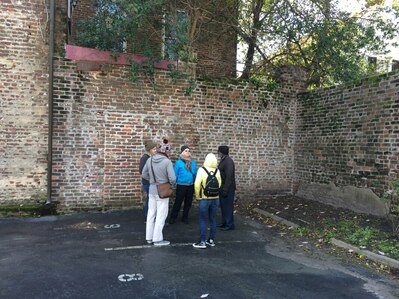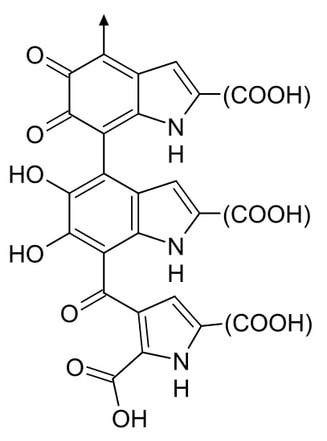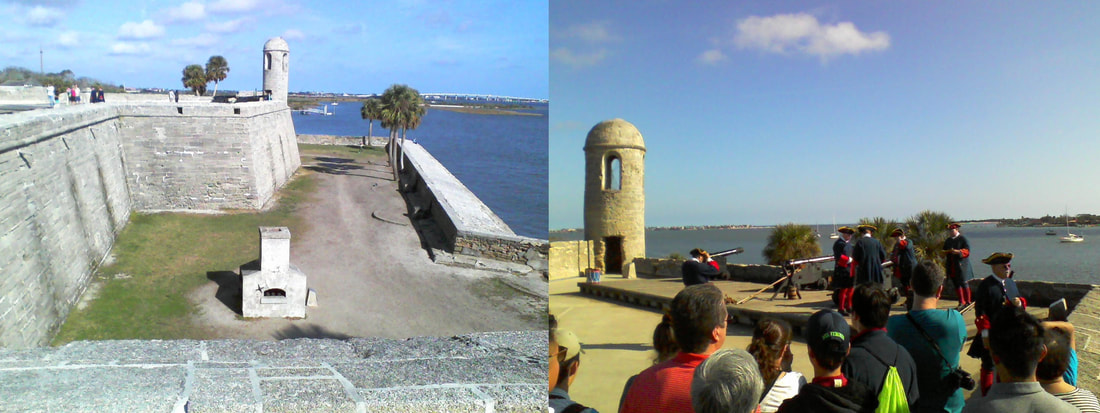 Most of the material in this post is taken out of the excellent book Chesapeake Requiem by the writer Earl Swift published in 2018. Mr. Swift lived for one year on the island of Tangier in the Chesapeake Bay. His book is a fascinating look at what is essentially the life and times of a small town whose economy is mostly reliant on the sea. He also describes in detail the rough life of the watermen, the men who risk their lives out in the water to catch the crabs and oysters consumed by Americans, and the ins and outs of their trade. But most importantly for the purpose of this blog, the author also extensively documents the plight of Tangier Island: it is disappearing. From the 1930s to the present day, two thirds of the island has been lost to the sea, and the pace of sea level rise in the Chesapeake Bay is accelerating. By the year 2050 Tangier may be by and large uninhabitable like other islands in the past that have experienced this fate in the Chesapeake Bay such as James Island, Sharps Island, and Holland Island. Because Tangier’s demise is happening in modern times when climate change has been identified as a worldwide problem, islands like Tangier are in a sense the “canary in the coal mine” of climate change, letting us envision on a small scale what will happen to coastal communities worldwide in the future. However, despite the certainty of these scenarios, scientists and climate change activists are mesmerized by the fact that the inhabitants of Tangier do not identify climate change as the root of their problems. The mayor of Tangier, James Eskridge, in 2007 had a face off in a televised town hall meeting with no other than environmental icon and former vice president, Al Gore. Mr. Eskridge explained his position (which turns out to be the same position of other communities in the Chesapeake Bay) that the problem they are facing is not sea level rise due to climate change, but rather erosion. He stated that he has a crab house business out in the water that was built in 1970, and in all this time he had not seen the sea-level rise that scientists claim to have occurred. Gore replied that scientists have documented that sea level in the Chesapeake Bay has indeed risen. However, he acknowledged that one of the challenges scientists have is translating this information to people in ways that are believable to them. Part of the issue is that the Tangier Island community is as conservative as they come. For example in 1946 when the congregation of the island’s only church attempted to remove a pastor deemed too progressive, the pastor left and founded a new church on Tangier. This event which split families apart led to widespread lawlessness ranging from acts of theft and vandalism to mobs of people throwing projectiles at the site of the new church’s building. The Methodist congregation in the island split again in 2011 over the belief that the broader United Methodist Church organization was becoming too liberal and did not support Israel enough. This led to a few tense years when some people in the island refused to talk to others. The town’s council once denied permission to Warner Brothers’ studio to film some scenes in Tangier of a romantic drama called “Message in a Bottle” because the movie contained cursing, alcohol drinking, and a sex scene. In the 2016 election, 87% of the population of Tangier voted for the now president of the United States, Donald Trump; an individual who has stated that climate change is a hoax.  Tangier Island Tangier Island In Tangier, the scientific establishment is in general viewed with distrust. This distrust has partly been fueled by climate change skeptic pundits who exploit conservative people’s fears by equating those who accept climate change and want to do something about it with atheists, liberals, and socialists. The people of Tangier would rather believe their own interpretation of what they have seen out on the water, than measurements taken by water stations, satellite data, or computer models. However, despite this, it is their belief in God and their ways which have allowed the inhabitants of Tangier to surmount many challenges. Among these are hurricanes have flooded and destroyed structures in the island (the highest part of the island is 4 feet above sea level), ghastly squalls, and other incidents that have taken the life of several watermen over the years, and fluctuations in the abundance of the crab and oyster populations and how much the market is willing to pay for them. The resilience of the Tangier community has been as remarkable as the strength of their faith. It could be argued that whether the cause of loss of land in Tangier is climate-change driven sea level rise or erosion is irrelevant, the important thing is to do something about it and save the island. Many have tried, but more often than not the plans for several projects to protect the island through the years have been bogged down in exasperating red tape and endless studies and studies of studies carried out by the US Corps of Engineers. Finally, the construction of a jetty to project Tangier’s Western shore was approved and will become a reality in this year, but many argue that in the long term this will not protect Tangier from the rising sea levels in the Chesapeake Bay. Some in the Tangier community think that the argument that climate-change driven sea level rise is to blame for their land loss problem and not erosion, is put forward to justify not doing anything about it. But the reality may be far crueler than that, and this is a quandary that many governments will have to face in the future. The quandary is: how much spending is justified to save a community? The island of Tangier has a population of 500 plus people. How many millions of dollars should be spent to save it as opposed to relocating the population elsewhere? In an era of mounting national debt and fiscal deficits, a lot of tough decisions will have to be made as coastal communities throughout the United States are threatened by rising sea levels. President Trump phoned the mayor of Tangier in 2017 and told him not to worry about sea level rise, adding that Tangier has been there for hundreds of years, and that he believes it will be there for hundreds more. Mr. Swift doesn’t seem to share that optimism, as we can surmise from the name of his book. Whether you are interested in science, government policy, or climate change activism, I highly recommend that you read it. I have only mentioned those aspects of the book that I deem relevant to this, a science blog. However, Chesapeake Requiem is much more than that. From the headstones of vanishing graves in old cemeteries being devoured by the sea to the ways of catching, classifying, cooking, and eating crabs, Mr. Shift describes for posterity a community that is now literally “living on a prayer”, a few decades away from oblivion. If you accept the reality of climate change, Tangier is the future, and it doesn’t look pretty. The image of the cover of the book Chesapeake Requiem is copyrighted and used here under the legal doctrine of Fair Use. The picture of Tangier from the US Army Corps of Engineers website is considered public information and may be distributed or copied.
0 Comments
 In this blog I have pointed out that there is a progression in emerging fields of scientific inquiry where competing theories are evaluated, those that do not fit the evidence fall out of favor, and scientists coalesce around a unifying theory that better explains the phenomena they are studying. However, even as a new theory that better fits the available data is accepted in the field, there are individuals who contest the newfound wisdom. Instead of accepting the prevailing thinking, these individuals buck the trend, think outside the box, and propose new ways of interpreting the data. I have referred generically to individuals belonging to this group of scientists that “swim against the current” as “The Unreasonable Men”, after George Bernard Shaw’s famous quote, and I have stated that science must be defended from them. The reason is that science is a very conservative enterprise that gives preeminence to what is established. Science can’t move forward efficiently if time and resources are constantly diluted pursuing a multiplicity of seemingly farfetched ideas. However, this is not to say that the unreasonable man should not be heard. There are exceptional individuals out there who have revolutionary ideas that can greatly benefit science, but there is a time for them to be heard. One such time is when the current theory fails to live up to expectations. I am writing this post because such a time may have come to the field of science that studies Alzheimer’s disease (AD). Alzheimer’s disease is a devastating dementia that currently afflicts 6 million Americans. The disease mostly afflicts older people, but as life expectancy keeps increasing, the number of people afflicted with AD is projected to rise to 14 million by 2050. The disease is characterized by the accumulation of certain structures in the brain. Chief among these structures are the amyloid plaques, which are made up of a protein called “beta-amyloid”. The current theory of AD pathology holds that it is primarily the accumulation of these plaques, or more specifically their precursors, which is responsible for the pathology. Therefore, it follows that a decrease in the number of plaques should be able to alleviate or slow down the disease. This has been the paradigm that pharmaceutical companies have pursued for the past few decades in their quest to treat AD. Unfortunately, this approach hasn’t worked. For the past 15 years or so, every single therapy aimed at reducing the amount of beta-amyloid in the brain has led to largely negative results. In fact, some patients whose brains had been cleared of the amyloid deposits nevertheless went on to die from the disease. Several arguments have been put forward to explain these failures. One of them is the heterogeneity in the patient population. Individuals that have AD often have other ailments that may mask positive effects of a drug. According to this argument, performing a trial with patients that have been carefully selected stands a greater chance of yielding positive results. Another argument is the notion that many past drug failures have occurred because the patient population on which they were tested was made up of individuals with advanced disease. According to this argument, drugs will work better with early-stage AD patients that have not yet accumulated a lot of damage to their brains. Even though many researchers still have hopes that modifications to clinical trials like those suggested above will have the desired effect as predicted by the amyloid theory, an increasing number of investigators are considering the possibility that this theory is more incomplete that they had anticipated and are willing to listen to new ideas and open their minds to the unreasonable man.  One example of these men is Robert Moir. For several years he has been promoting a very interesting but unorthodox theory of AD and getting a lot of flak for it. He dubs his hypothesis “The antimicrobial protection hypothesis of Alzheimer’s disease”. According to Dr. Moir, the infection of the brain by a pathogen or other pathological events triggers a dysregulated, prolonged, and sustained inflammatory response that is the main damage-causing mechanism in AD. In this hypothesis, the production and accumulation of the amyloid protein by the brain is actually a defense mechanism! Dr. Moir agrees that sustained activation of the defense response will lead to excessive accumulation of the amyloid protein and that this eventually will also have detrimental effects. However, even though reduction in amyloid protein levels may be beneficial, accumulation of the amyloid protein is but one of several pathological mechanisms. Moir stresses that the main pathological mechanism that has to be addressed by AD therapies is a sustained immune response, which over time causes brain inflammation and damage. He considers that accumulation of the amyloid protein is a downstream event, and it is known that the brain of people with AD exhibits signs of damage years before any amyloid accumulation can be detected. But much in the same way that Dr. Moir has been promoting his unconventional theory, there are many other theories proposed by others. Oxidative stress, bioenergetic defects, cerebrovascular dysfunction, insulin resistance, non-pathogen mediated inflammation, toxic substances, and even poor nutrition have been proposed as causative factors of AD. This is the big challenge that scientists face when opening their minds to the arguments of the unreasonable man: there is normally not one but many of them! So who is right? Which is the correct theory? And why should just one theory be right? Maybe there is a combination of factors that in different dosages produce not one disease but a mosaic of different flavors of the disease. And maybe the amyloid theory is not totally wrong, but just merely incomplete, and it needs to be expanded and refocused. Or maybe the beta-amyloid theory is indeed right and all that is required for success is to tweak the trial design and the patient population. Maybe, maybe, maybe… When a scientific field is beginning, or when it looks like a major theory in a given field is in need of reevaluation, there always is confusion and uncertainty. Scientists in the end will pick the explanation(s) that better fits the data and take it from there. They did that when most scientists accepted the amyloid theory and they will do it again if this theory is found wanting. The new theory that replaces the amyloid theory will not only have to explain what said theory explained, but it will also have to explain why the old theory failed and what new approach must be followed to successfully treat the disease. In the meantime, Dr. Moir’s theory, along with a few others, is the center of focus of new research evaluating alternative theories to explain what causes AD. The amyloid theory or aspects of it may still be salvageable, but in the field of AD it certainly looks like the time for the unreasonable man has come. Note: after I posted this, I became aware of an article published in the journal Science Advances that proposes a link between Alzheimer's Disease and gingivitis (an inflammation of the gums). The unreasonable men are restless out there! The image is a screen capture from a presentation by Robert Moir on the Cure Alzheimer’s Fund YouTube channel, and is used here under the legal doctrine of Fair Use.The brain image from the NIH MedlinePlus publication is in the public domain. On a trip to Florida, I visited the Washington Oaks Gardens State Park to check out the coquina rock formation on the beach. This type of rock, whose name is derived from the Spanish name for “shell”, is only found in a few places around the world, but it is plentiful in Florida. What makes this rock unique is that it is made up of millions of tiny shells that have been cemented together. If you inspect the rock you can easily make out the individual shells. The way this rock was made is that over thousands of years the small mollusks that made the shells died and through wave action the shells got sorted and deposited in ever deepening layers. When the sea receded, the layers of shells were exposed and rain percolating through the top layers dissolved some of the calcium in the shells and deposited it in the deeper layers gluing the shells together and forming the rock. The action of the waves erodes some areas of the rocks in a circular fashion creating pools of sea water. As the erosion of the rock progresses the bottom of the pools is breached, and this gives rise to round holes in the rocks. Besides its geological characteristics, the coquina rock in Florida is also interesting for historical reasons. Spain had founded the city of Saint Augustine on the East Florida coast in 1565. By the 1600s the Spaniards began fearing the British would invade the city, and they decided to construct a fort that still stands to this day called “Castillo San Marcos”. As the only rock they could find in the area was coquina, the Spaniards erected the fort employing this rock. So essentially the Spaniards built a fort made of shell fragments glued together by erosion to ward off a British invasion! The British attacked Saint Augustine on 2 occasions, in 1702 and 1740. They subjected the castle to heavy cannonball fire trying to breach its walls, but to their surprise, the castle walls did not shatter when hit by the cannonballs. Rather the cannonballs either bounced off the walls or were absorbed into the coquina rock and the castle held its ground against the invaders. It was only in 1763 that the British gained St. Augustine (and all of Florida) as a result of the treaty of Paris.
So what happened? How could rocks made out of glued seashells resist cannonballs fired at them? The impact response of coquina has been studied. Because of its make up, coquina is a very porous rock that deforms easily when something impacts against it. While other rocks experience brittle fractures and shatter as a result of an impact, coquina has a high capacity to absorb energy from projectile impacts. And this ability has not merely allowed the Castillo San Marcos to resist the British sieges, but it has also allowed the fort to resist hurricanes and tropical storms, and remain standing for more than 300 years. Not bad for a rock made out of glued seashells, eh? The photographs are by the author and they can be used with permission.  Old Slave Mart Museum Old Slave Mart Museum I visited Charleston and stopped by the Old Slave Mart Museum. The museum occupies the very same building where black people in the 1850s were sold like animals, often tearing families apart when different family members were sold to different buyers. It is believed to be the last such structure of its kind still standing in South Carolina. The inside of the museum chronicles in detail the evils of slavery and documents how the old city of Charleston was built by slave labor.  Area Occupied by the Morgue Area Occupied by the Morgue The role of slaves in building the city was further expounded upon in a tour of the area behind the Slave Mart which used to have a morgue, a kitchen, and a barracoon (these 3 structures, demolished long ago, were part of a scheme by which slaves to be sold were fed and made healthy before auction to the highest bidder). Standing in the area that used to be occupied by the morgue, the tour guide explained that slaves made the bricks used in the original buildings of the city. To make the bricks, the slaves would insert clay in a mold and then allowed it to dry in the sun. The clay was then removed from the mold in a process where slaves used their hands and sometimes left imprints of their fingers in the clay of bricks that were removed too early.  Eumelanin Eumelanin Being able to insert my fingers in those indentations was a powerful experience. The individual who was forced to make these bricks is dead and long-forgotten, but the marks his fingers made on this brick so many years ago are evidence that he existed. This individual lived a life of servitude under a cruel system that considered him property. People like him made up the economic backbone of the Southern United States, building its cities and towns and growing its crops. It would take a ghastly civil war and more than 500,000 casualties to break this backbone and start the country on the path that would guarantee freedom to blacks in the United States. Racism is a many-layered phenomenon that has multiple proximal causes, but at its most fundamental level racism is probably a by-product of xenophobia, the fear of strangers or those who are different. Xenophobia from a biological point of view grants survival advantages to animals including humans. Keeping close to those who we know (flock, pack, family, tribe etc.) is safer than approaching those we don’t. However, human beings can all too easily make the leap from “different” to “inferior” and from there to “not worthy of fundamental rights or respect”. But what differences can make someone “inferior” in the eyes of another? There has been a lot of controversy regarding things like intelligence testing or cranial capacity and how the different races fare against each other when evaluated by these metrics. I am not going to discuss these here because the vast majority of racist people do not make the primary decision to discriminate based on these metrics. Even though there are several differences between white and black individuals, the most obvious trait based on which a white person makes the decision to discriminate against a black person is that which makes them most different: the color of their skin. What is responsible for skin color? The color of the skin is due to molecules called eumelanin and pheomelanin that are produced in cells in the skin called melanosomes. The number of these cells and the ratio of eumelanin to pheomelanin determine skin color. Eumelanin is the darker pigment and protects the skin from the harmful ultraviolet rays of the sun that can produce cancer. Scientists believe that eumelanin evolved to protect the skin as an adaptation to life in the tropics when the ancestors of human beings lost their bodily hair. At the same time, however, sunlight is required for the human body to manufacture vitamin-D, which is necessary for life. As human beings with dark skin migrated from the tropics to northern latitudes where sunlight is not as strong and the body has to be covered to preserve heat, black skin became a hindrance to vitamin-D production. This in turn favored the advent of human beings whose skin produced less melanin and was lighter in color. Science cannot make value judgements because that is simply not its nature. Science cannot tell us that discrimination or slavery (or anything else for that matter) is “wrong”. However, science does have tools that allow for examination of arguments within logical frameworks. As a scientist, when I hear someone expound racist ideas arguing that people with black skin are somehow inferior to people with white skin, what I hear is that just because the concentration of eumelanin in your skin is higher, that makes you somehow inferior to others that have lower levels of this molecule. To me this does not make sense. Why should having higher levels of eumelanin in an organ like the skin make you inferior to others? The biochemical and physical properties of eumelanin have been extensively studied and, besides its relationship to cancer and vitamin-D, there is nothing in this molecule whatsoever that is any way connected with a possible physical or mental handicap (if that is what is meant by the word “inferior”). The whole premise is absurd.
Xenophobia may form part of our inherent biological programing and may make us prone to discriminate against others, but the impulses that arise from this ancient programing can be channeled in positive ways and modified by education to produce adults that judge people by their character and not the color of their skin. The image of eumelanin is in the public domain. The pictures are by the author and may be used with permission. |
Details
Categories
All
Archives
June 2024
|






 RSS Feed
RSS Feed